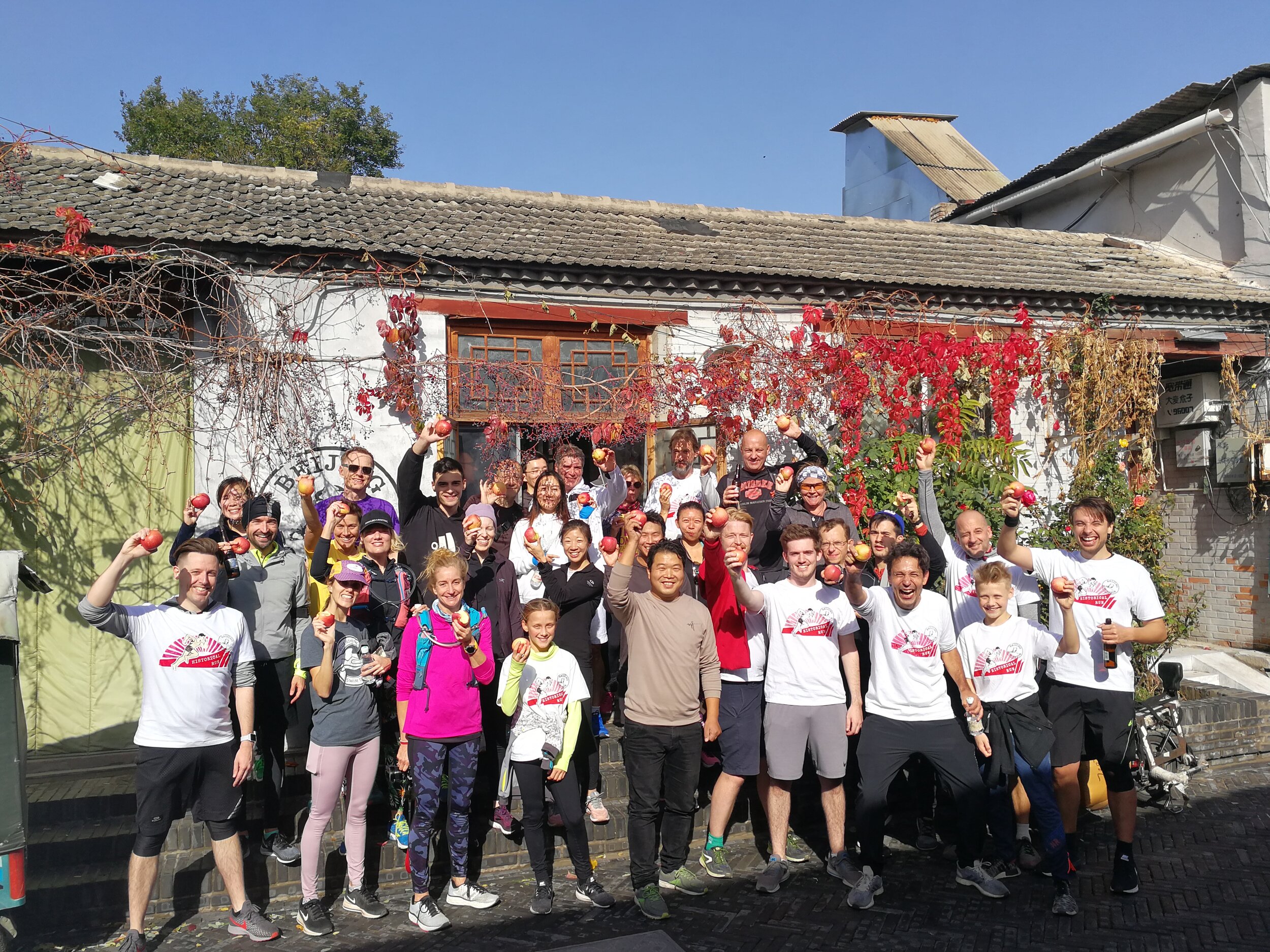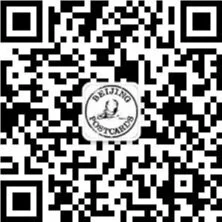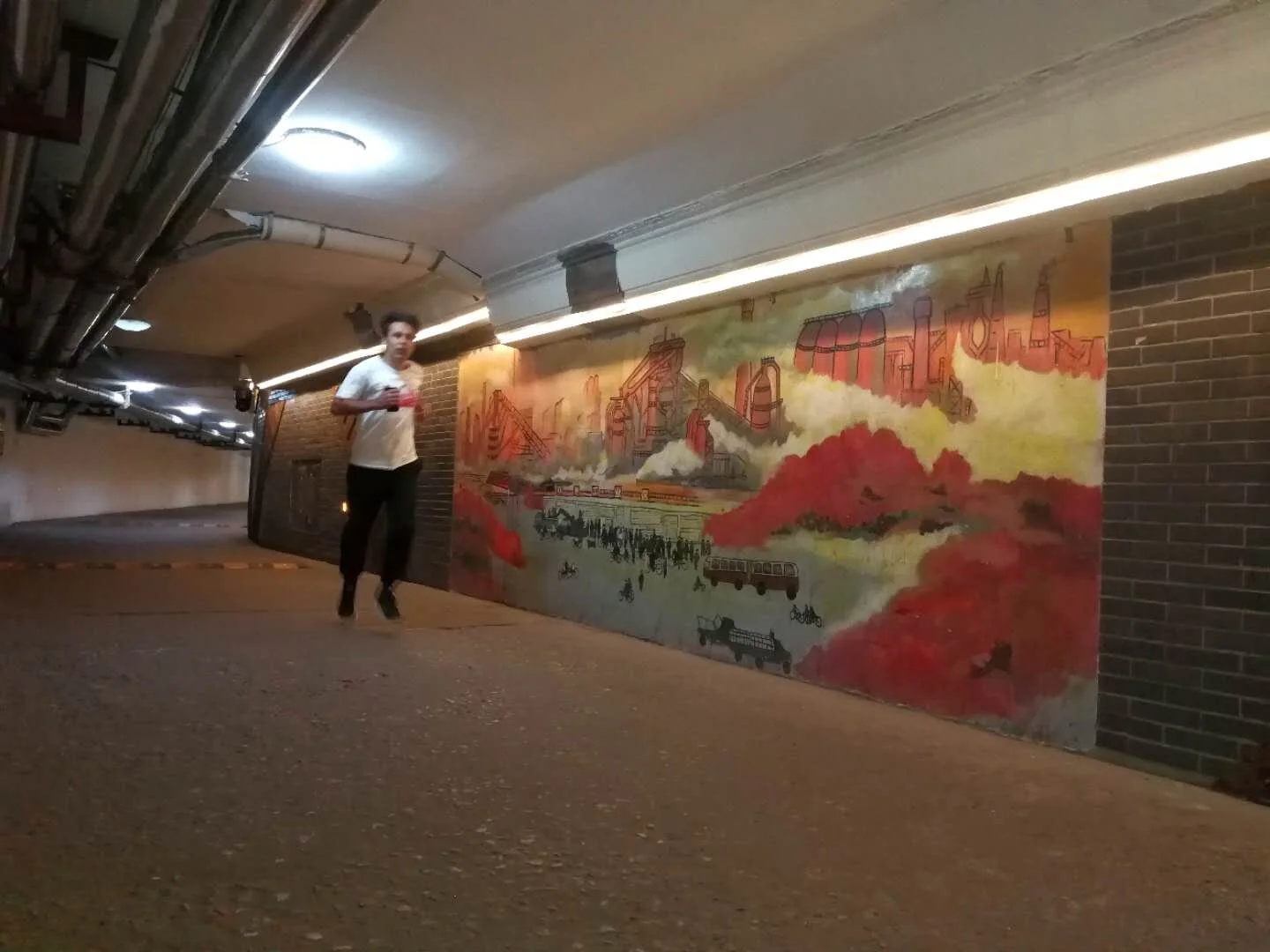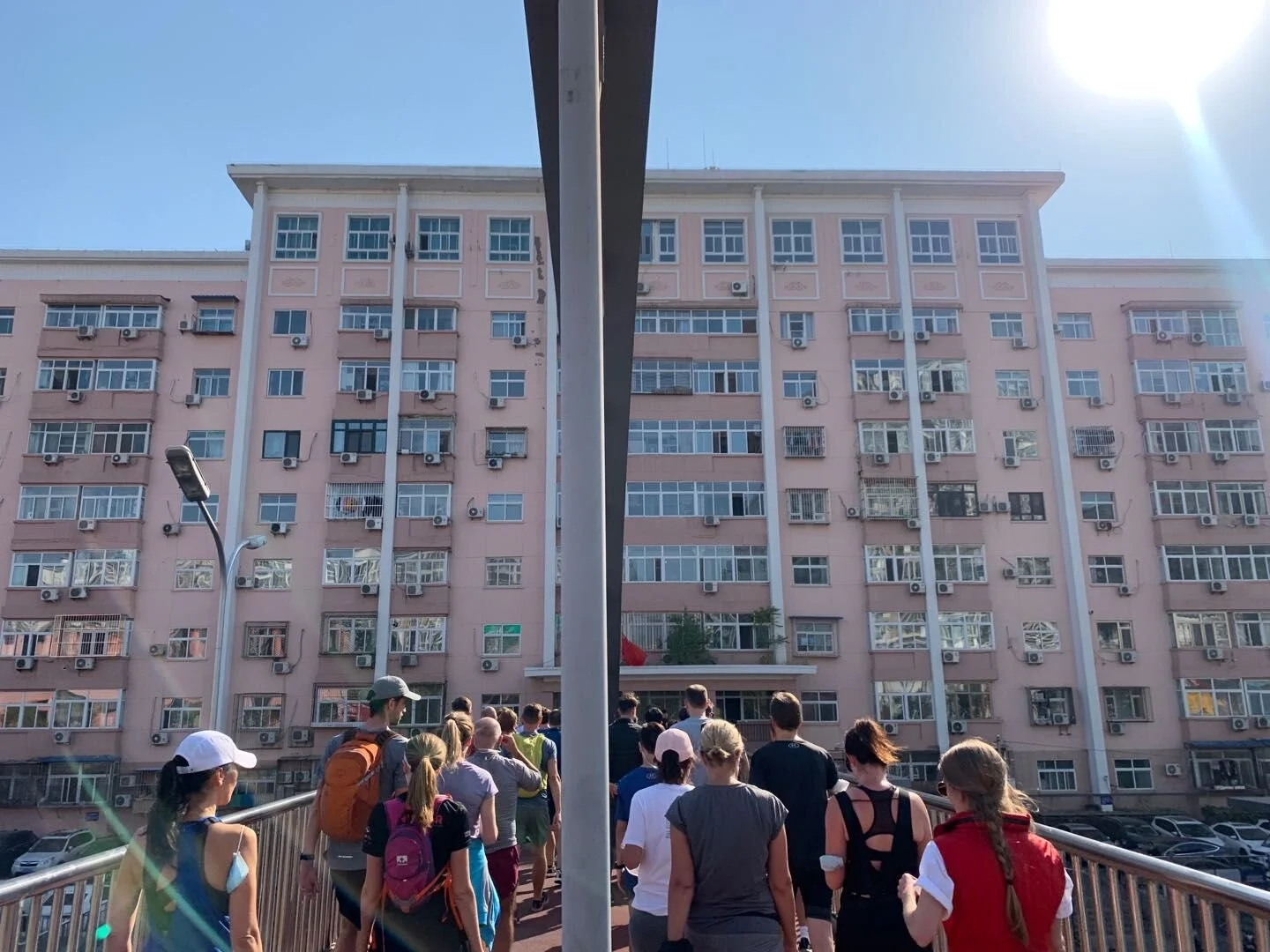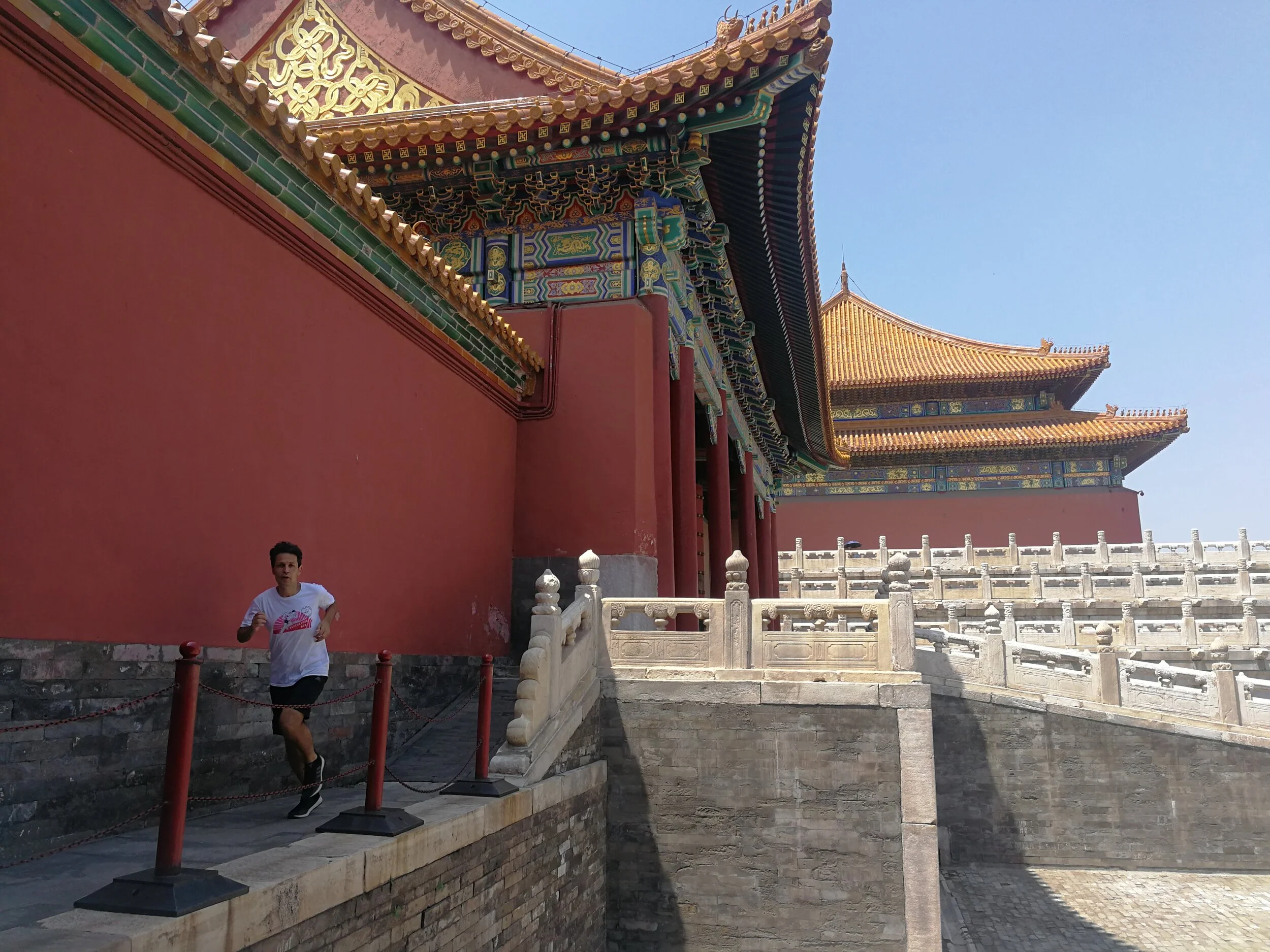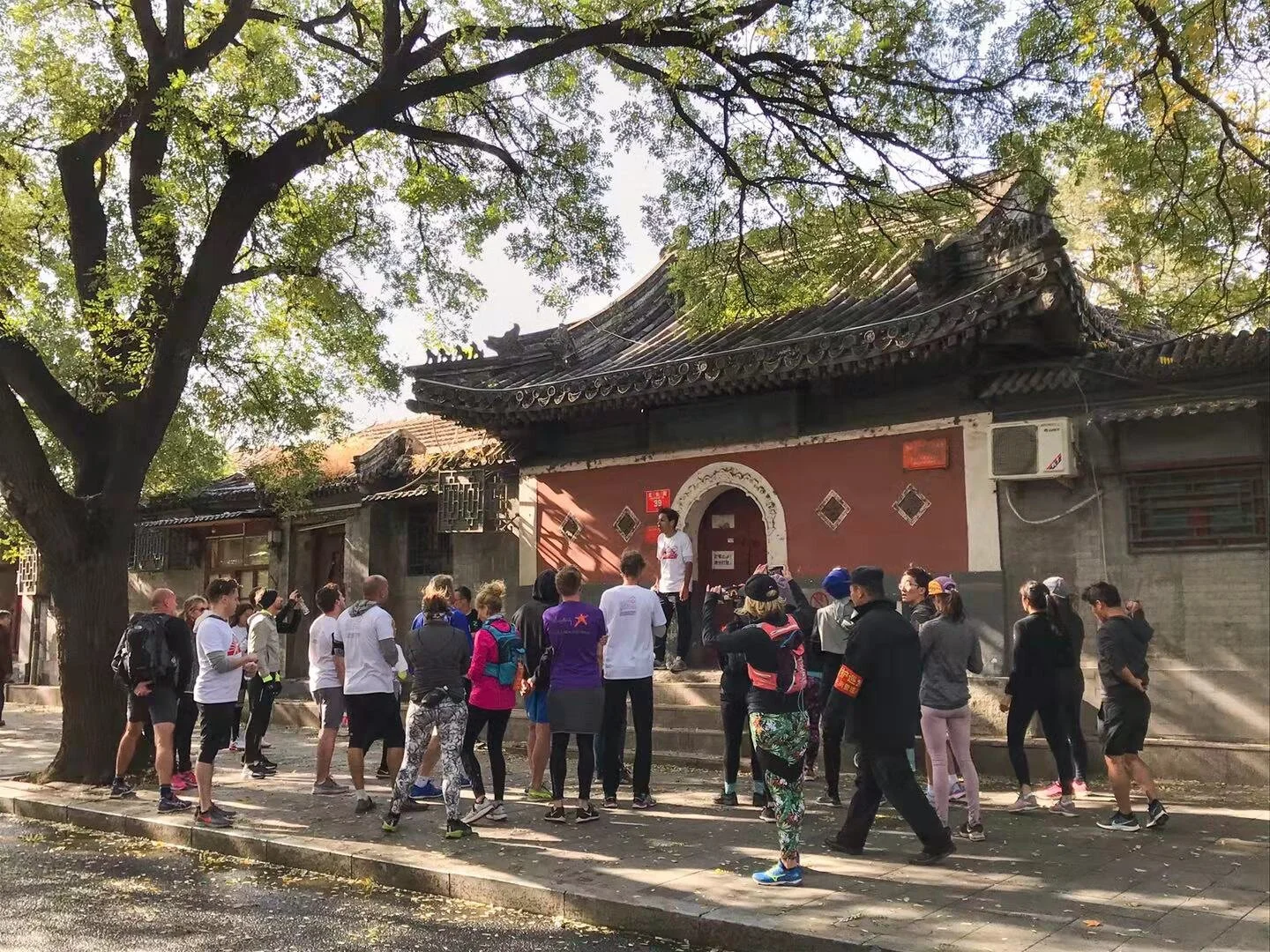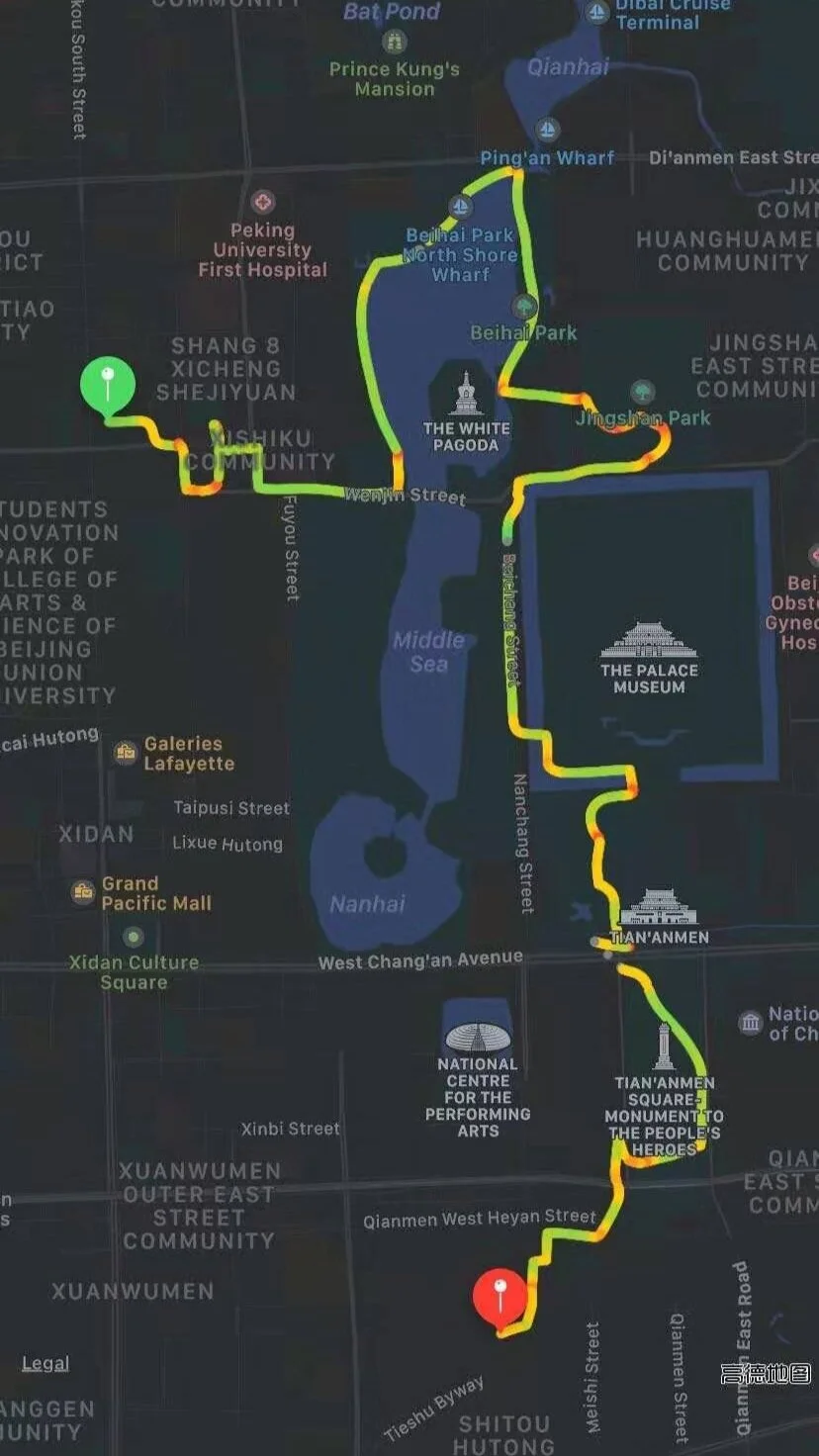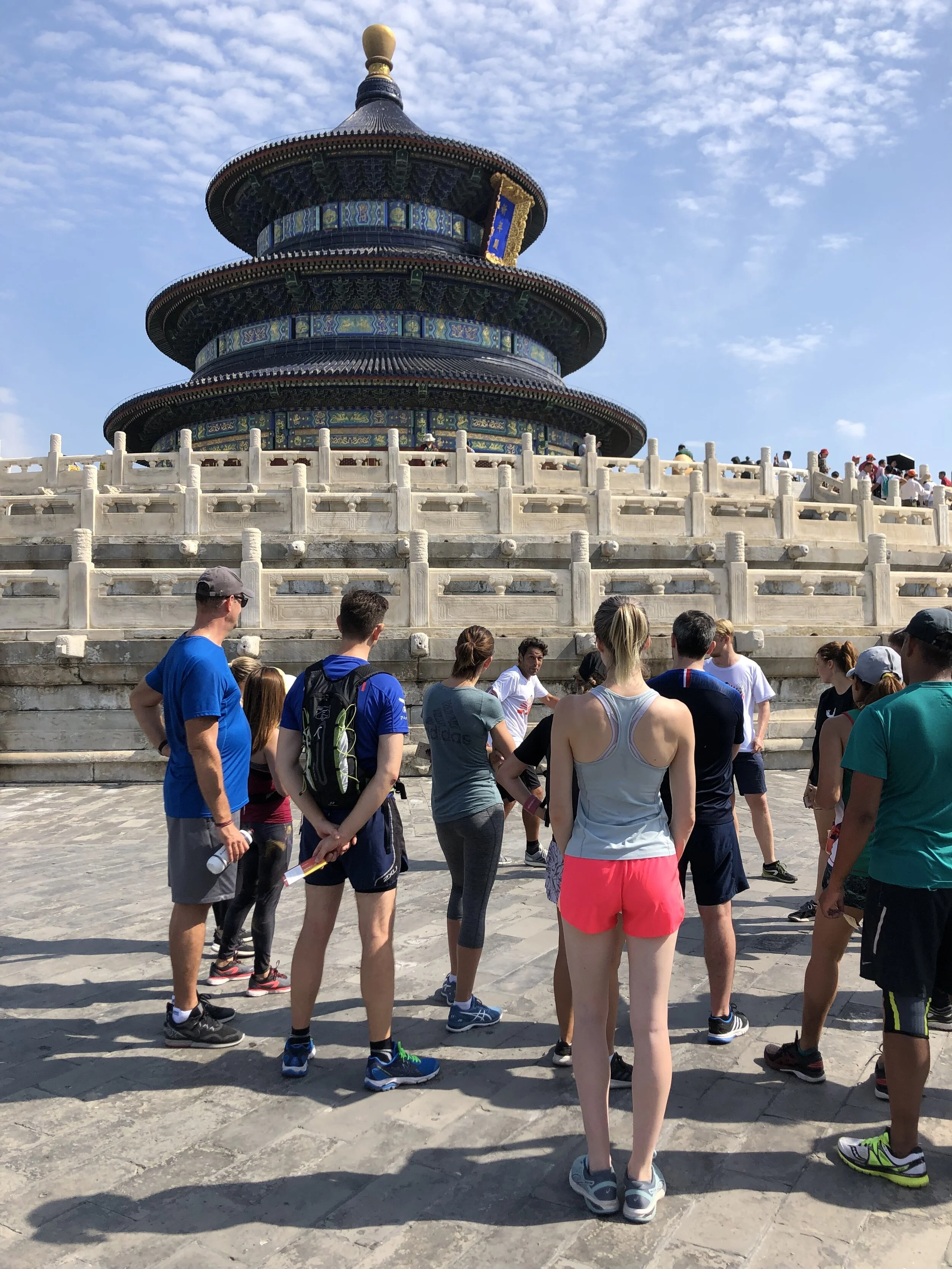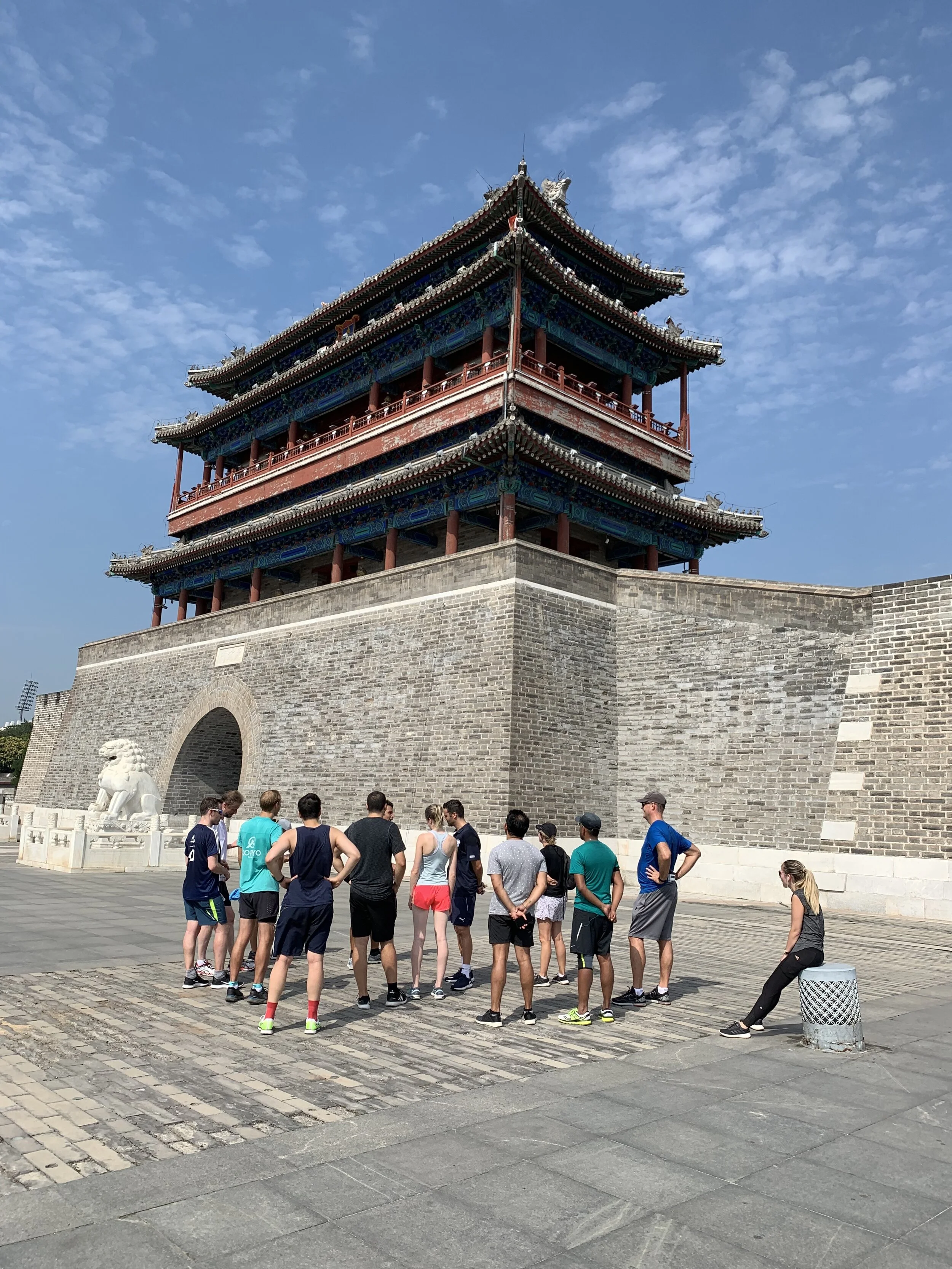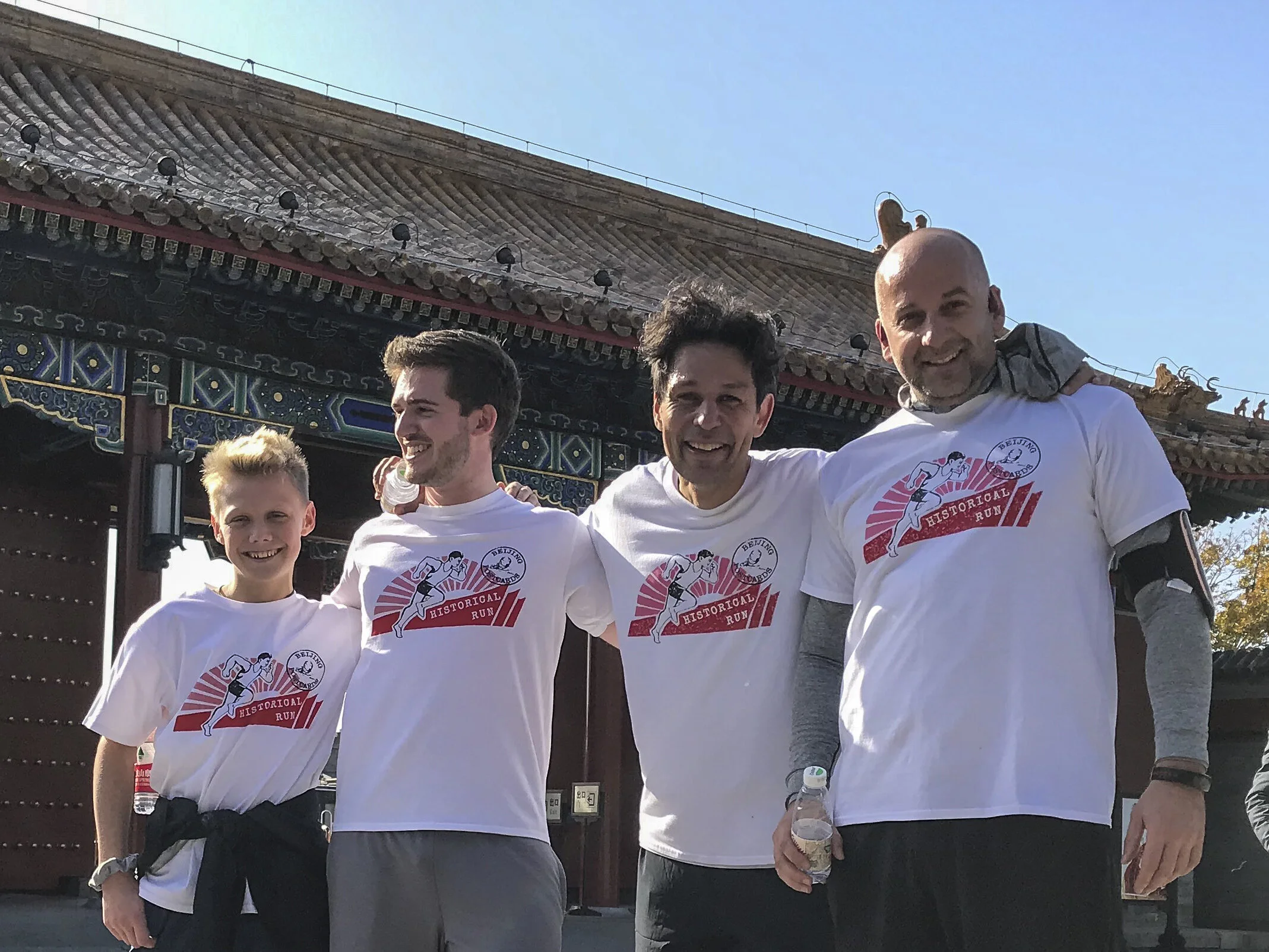
Beijing Postcards Historical Run
Themed 10-Kilometer runs through old Beijing
Moving ignites your brain. When we try to understand something the physicality of it should not be ignored. That is why Beijing Postcards has developed a series of historical runs. The idea is to follow themed trails through the city, passing historical reference points along the way, connecting the dots with our feet.
Check below for the previous themed runs, and stay tuned on WeChat for the upcoming runs!
Stay tuned on WeChat
EXERCISE FOR THE MOTHERLAND
On this Run, our feet will cover 1000 years of history over a 10km course.
We start off where the first city of Beijing was located thousands of years ago, gathering at the Tianning pagoda. This impressive piece of architecture is the oldest construction still standing in Beijing today. It dates back to the Liao dynasty, the first dynastic rulers that chose Beijing as their capital. On the grey walls of the temple we can just make out some gigantic faded characters reading: “Exercise for the Motherland” - let that be our guiding principle for the day as we follow a trail through the evolution of modern Beijing!
From the ancient pagoda we will steadily work our way up to the present day, passing sites that include the first parliament of China, the earliest Beijing stock exchange, an enormous industrial complex from the 1970s, and even the last remnants of the outer city wall that the Communists tore down as part of their industrialization of Beijing after liberation in 1949. You, too, may feel liberated when we finally arrive at the Beijing Postcards gallery for a well deserved drink!
THE GREAT LEAP FORWARD
On this run we trace the industrialization of Beijing. We start off at the Grand Canal, which for hundreds of years was the lifeline of the city when there was no production to speak of in the capital. Then we run through an area which in the 1930s was transformed into Beijing’s industrial zone by the Japanese occupiers.
The changes in this area were, however, nothing compared with what happened to the city after the communist liberation. The Soviet Union built complexes, communal style apartments from the Great Leap Forward, and finally closed hutong production sites (where many of the former workers are still living to this day!) will all show us traces of a time when all of Beijing was a giant production plant.
FORBIDDEN CITIES OF OLD BEIJING
A hundred years ago in the city of Beijing many places were off limits to commoners. The yellow roofs of the Forbidden City housed one such mysterious impenetrable compound, whilst another was the fortified Legation Quarter where Beijing’s diplomatic society was located. There were several other areas of the city which were not strictly speaking forbidden to visit, but which were seen as highly morally questionable to frequent. One such area was the Bada Hutong, with its brothels and opium dens. At this Run, we connect all three of these forbidden areas.
TEMPLES, CHURCHES & TIANANMEN
In this run we look at places of worship. We start out at the Beitang Cathedral, the only church in Beijing to survive the Boxer Rebellion in the year 1900. From there, we will run from temple to temple. Within a few hundred meters we will pass segregated religious compounds with different functions - culturally, politically, and religiously. Inside Beihai Park, we will find the white stupa built to the Dalai Lama when he visited Beijing in his fifth reincarnation. On top of the Coal Hill, the Five Pagodas built to the Five Holy Mountain peaks by the emperor Qianlong are excellent platforms for looking at the Forbidden City. We will finally stand in front of the Tiananmen Gate - a piece of architecture that has arguably become a Communist shrine in more recent times.
HILLY HUTONGS IN THE MARSHLANDS OF OLD BEIJING
This run takes place in the Outer City of the old Capital. We start off by exploring the hilly hutongs in the old marshlands just east of the Temple of Heaven, and after that we enter the temple compound itself. Here, we run across the land where cattle raised for the grand rituals used to graze. We exit by the south gate and run along the moat. Next, we enter Taoranting Park. Inside, we find the spot where the original, Ming Dynasty archways of what is today the Changan Boulevard were moved to in 1954. Once outside the park, we pass the Qianmen Hotel originally built to house the Russian experts assisting China in the 1950s. Our last stop is the Beijing Postcards Public History Space where a well-deserved drink will await us.
FROM CITY TO CITY WITHIN YOUR CITY
“From city to city within your city” passes through the old division lines of Beijing. We will trace the cities of the old capital passing remnants of: The Inner City, The Outer City, The Mongolian City, The Legation Quarter, The Imperial City, The Forbidden City, and much more.
